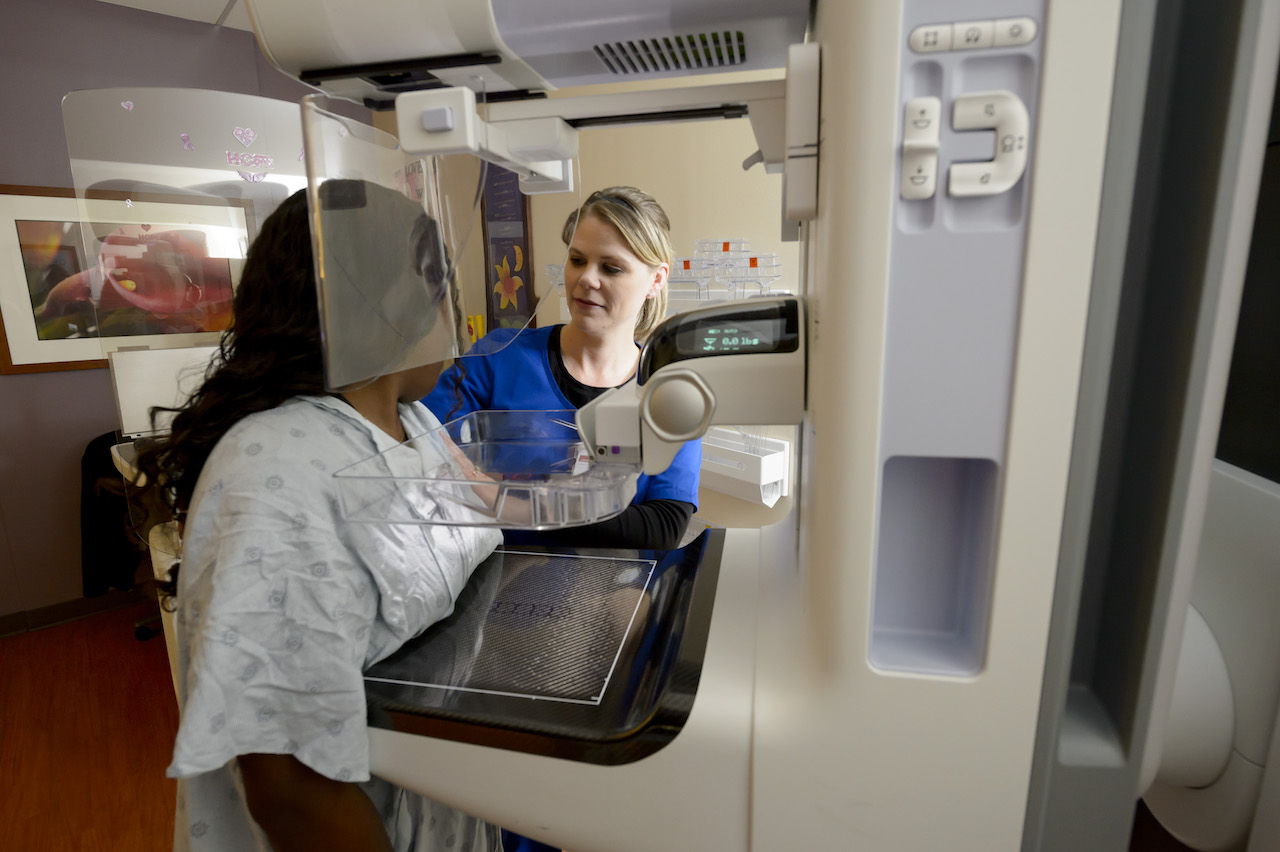
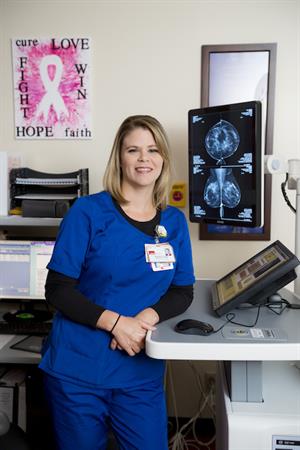
All it takes is 20 minutes for Heather Fields to help a woman take control of her breast health.
“A mammogram is the best way to detect breast cancer early—when it is most treatable,” said Fields, a breast imaging technologist at UTMB’s Angleton Danbury Campus. “It only takes a few minutes and it saves lives.”
I meet up with Fields on a Tuesday morning, as she prepares for back-to-back 20-minute mammography appointments in the ADC Hospital’s diagnostic imaging area. Although the clinic is busy, she never seems rushed and works hard to create a soothing atmosphere for patients to calm any pre-exam anxiety. The mammography room is softly lit, with light music playing in the background and tranquil artwork hanging on the walls—it feels more like a spa than a clinical room in a hospital.
“I do everything I can to help each woman relax and take any worries off their mind,” says Fields, who has worked in radiology at the hospital for nearly 10 years. “A lot of women have had a mammogram several times before and it’s not a big deal, but for others who may be having a mammogram for the first time or have family history of breast cancer, it can be a nervous and scary time.”
Fields excitedly points out the impressive piece of technology in one corner of the room—it’s a new 3-D mammography machine that she’s been using since April.
“This takes multiple pictures (X-rays) of breast tissue and allows radiologists to create a detailed 3-D image and see the entire breast more accurately,” says Fields. “Using 3-D mammography helps doctors more easily detect breast cancer and has helped reduce the number of false positives and unnecessary callbacks— it’s been really great.”
 3-D mammography machine
3-D mammography machine She adds that technology has advanced quickly since she first started doing mammograms, about seven years ago.
“In 2010, we were still using screen-film mammography which captured the image on actual film that had to be developed. Then it changed quickly to 2-D digital which sent the image directly to a computer, and then it progressed to 3-D in just a few years. It makes me wonder, what is it going to be next? I can’t imagine anything better than this, but I like learning new things.”
Before inviting the first patient back, Fields goes through a series of quality control tests to make sure the machine is calibrated and working correctly. Once everything is ready, she introduces herself to the patient in the waiting room and brings her back to the mammography room, where they go through the patient questionnaire and discuss any questions or concerns. As the patient changes into a gown, Fields stands outside the door and describes how the screening exam usually proceeds.
“I just talk them through it and try to be as gentle as I can while still getting the best exam possible,” she says. “An exam may be a little uncomfortable, but it shouldn’t be painful. Some people have heard horror stories about getting a mammogram and getting tortured basically, but that’s not true. Most of the time, after their exam, patients say ‘That wasn’t so bad!’”
Fields puts her hand on the patient’s back in a comforting manner as she
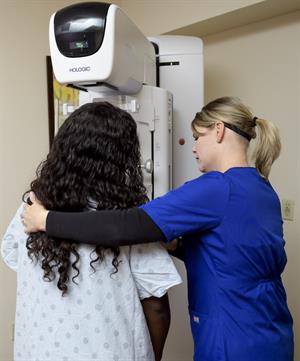
positions the breast on the equipment and compresses it to take X-rays from the front and sides. It’s an intimate job—to get a good picture, Fields has to get in the patient’s personal space.
“The positioning part of mammography can be the most challenging,” says Fields. “Patients come in all different sizes, ages and body habitus (physique), so it’s important to be competent in various positioning techniques. My goal is to get the best image possible on every patient.”
The first patient leaves the clinic with a smile on her face and is reassured that she will hear results from her doctor as soon as the radiologist reviews the images.
In between mammograms, Fields checks the electronic medical record system to see if any help is needed in the Emergency Department or inpatient units. As a certified radiology technician, Fields is trained and holds certifications in other imaging “modalities” as well, including X-ray, CT (computed tomography) and bone density scans. I tag along as she heads to the ED with a portable X-ray machine to take a chest X-ray on an elderly man who took a hard fall at his home. After the X-ray, she transports the patient to the diagnostic imaging area for a CT scan of his head and neck, as well.
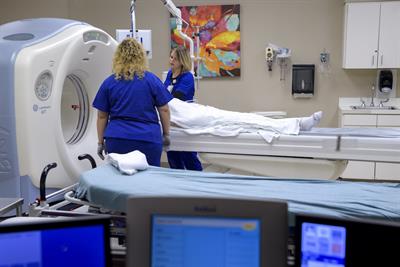
“I do find myself running around a lot when I’m not doing mammograms— I have to change hats all day long. After this CT scan, I’m going to perform a bone density scan on a patient and then do a mammogram after that. Sometimes I have to stop and think, ‘OK, what am I doing right now?’” she laughs.
It’s impressive to see Fields expertly handle each piece of equipment. It looks like there’s a million different buttons to press and things to position perfectly before taking each picture. But she does it in a focused, meticulous way that makes it almost look easy.
On our way back to the mammography room, we run into Michael Wedgeworth, the senior manager of diagnostic imaging at ADC. He only has good things to say about Fields, who has been dedicated to growing ADC’s breast health imaging program.
“Heather is committed to ensuring that each mammogram goes smoothly, the patients have a good experience and that they are empowered with all the information they need,” says Wedgeworth. “There’s the perception that when you get a mammogram, it’s going to hurt and be painful, but it doesn’t have to be. She’s really good with patients and she’s very skilled in obtaining accurate images. Additionally, our department has a dedicated breast navigator who works with patients who have an abnormal screening mammogram, or other breast health concerns, to ensure that these patients are followed up as soon as possible.”
While the majority of mammograms performed by Fields are routine
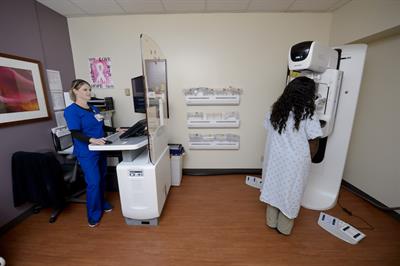
screening exams, she also works with patients who have specific concerns such as a lump in their breast or a prior abnormal screening mammogram. These patients receive a diagnostic work up, which may include additional mammogram images, breast ultrasound, or even a breast biopsy if indicated. Fields works closely with the radiologist to review diagnostic procedures quickly so that patients can receive the appropriate follow up as soon as possible.
With breast cancer being the second leading cause of cancer death in women (only lung cancer kills more women each year), Fields likes educating others on how important a simple mammogram can be. She points to American College of Radiology guidelines, which recommend annual screening mammograms beginning at the age of 40—earlier if there is a family history of breast cancer.
“I’m very passionate about women’s health and doing what I can to be a support for them,” says Fields, adding that she looks forward to seeing familiar faces each year. “Even if it’s just listening. A lot of women come in and don’t have anyone to talk to, so I can be that person who they talk to about whatever they want as they get their exam done. More often than not, I find it does help put the patient at ease and take their mind off the mammogram.”
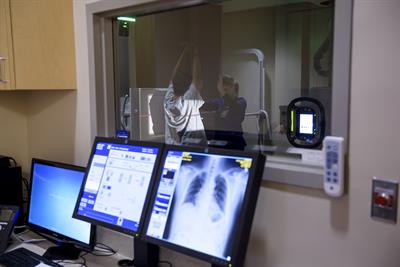
By the time I leave at 1 p.m., Fields has completed three more mammograms, in addition to performing two more chest X-rays, a bone density test and assisting a new staff member with using the CT machine. She’s on the move constantly—I even lose her in the hallway a few times as she jumps from one task to the next. Although her time with each patient is relatively short, she feels rewarded knowing each 20-minute appointment may help save a life.
“I get a lot of satisfaction out of what I do and it makes me feel good when patients say I provided the best mammogram they’ve ever had,” she says. “Detecting even the smallest of cancers before any symptoms appear can make a huge difference in a woman’s life—that’s what makes it all worthwhile.”